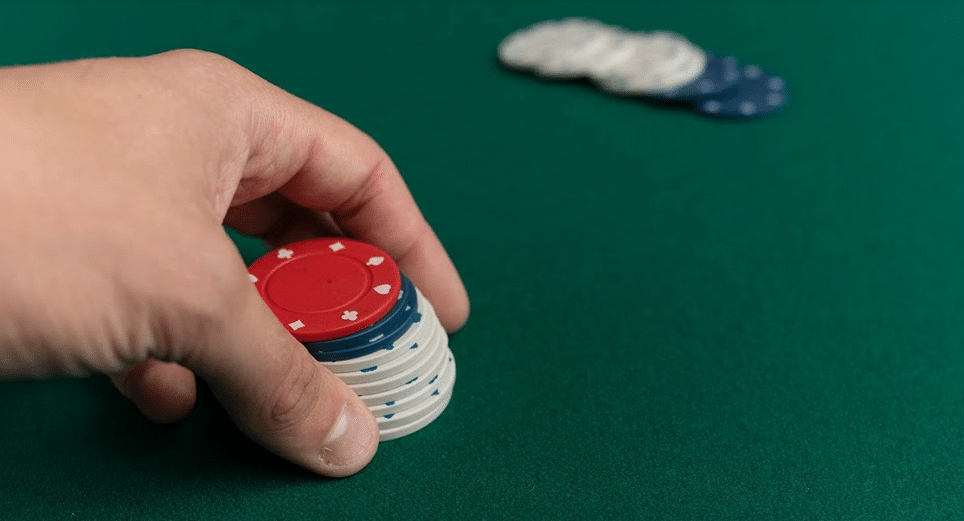
Checking in poker means deferring your turn to bet until other players have made a move. If someone else bets, whether it’s right after you or three hands down, the player who has checked has to make a move. At this point, the player will either need to call, raise, or fold.
As such, a check-raise occurs when a player decides to raise after they had initially checked. This strategy is generally used when you’re trying to imitate a weak hand and encourage others to bet to enhance the pot.
This is accomplished by getting another player to place a bet instead of yourself, allowing you to raise the initial odds, whereas other players might have just called if you had placed an initial bet.
Although this strategy isn’t illegal, it’s frowned upon in some housing games as a lack of etiquette. A few casinos in Las Vegas have banned this practice based on that reason. This strategy is also only applicable when a bet is made.
If every player in the game decides to check, the opportunity to raise is lost. As such, disguising your hand is crucial. If other players sense that you have a strong hand and are attempting to raise the odds, they’ll simply fold or check as well.
Attempting a check-raise is pretty straightforward. The strategy is in the name, as a player first checks on their turn and raises when another player places their bet. In physical terms, it can be defined as a feint where you fool your opponent into thinking you’re going in one direction when planning to go in the other.
One of the most attractive things about this strategy is that it gives the player additional time to make a final decision. If an opponent indicates that they might have a stronger hand than yours, you can simply decide to fold instead of going through with the raise.
Players A, B, C, & D are playing a game of poker.
Player A on the pre-flop ($2) is BB with 6♦9♦.
Players C and D fold, while Player B raises the stake to $6.
Player A calls the $6.
With two players left, Player A checks on the flop ($14).
Player B bets $6.
Player A then raises to $15.
Player B is then forced to add to the pot or fold.
The cards on the board will generally determine the actions of a player. In a bold move where another player has significantly raised the bet, a player might be hesitant to risk their stack if they doubt their hand. A check-raise is supposed to hint at a strong hand and generally comes out as a dare.
The individual applying this strategy is claiming that they are sure of the win. However, there are many instances where this might not be the case, and the player is simply throwing a hail mary in the hopes that their opponent will fold out of fear.
Timing is crucial when looking to check-raise successfully. This strategy is best applied when you’re on the button or early in the betting round. The further you are along the betting round, the harder it is to implement a check-raise.
Professionals advise newbies to only check-raise when they are sure that their hands can’t be beaten.
Experienced players, on the other hand, can attempt to bluff their hands with a check-raise. If you suspect a player has a good hand, you can check-raise in an attempt to persuade them to fold because they think you have a better hand.
This can be a risky strategy, however, as your opponent can be sure of his hand and call your bluff. You also have to be sure that one of the players will make a bet when using this approach. The kind of hand you apply your strategy to also plays a role in the potential success enjoyed with a check-raise.
It can be easier to implement this strategy with a straight, for instance, rather than a flush, despite the fact the latter represents the more powerful hand. This is because professional players are likely to put on the brakes when three suited cards are on the board, making it less likely for them to raise the odds.
Some of the advantages that can potentially be enjoyed with a check-raise include:
It’s worth noting that a check-raise might not always be an effective strategy when playing online poker games. These platforms can feature tracking software that calculates the percentage a player goes for a check-raise given the opportunity and analyzes the potential of that player having a good hand the next time they attempt the move.
The major risk involved with a check-raise has to do with predicting the potential strength of other players’ hands. Bluffing using a check-raise, for example, can blow up in your face if you don’t have the experience needed to successfully commit the subterfuge.
Most newbies have blatant tells that are easily read by skillful players. Check-raising as a bluff can lead to enhanced losses should another player decide to call you out.